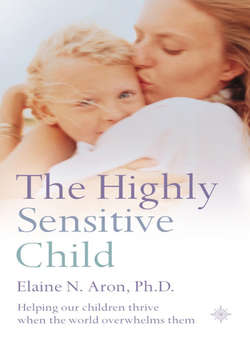Читать книгу The Highly Sensitive Child: Helping our children thrive when the world overwhelms them - Elaine N. Aron, Elaine N. Aron Ph.D. - Страница 17
If There Are So Many HSCs, Why Haven’t I Heard of This Before?
ОглавлениеToday, we know that about 50 percent of personality is caused by innate temperament differences such as high sensitivity. The other 50 percent is caused by experiences or the “environment.” But not so long ago psychologists believed that a person’s personality was completely determined by experiences, especially experiences within the family.
When psychologists did begin to study temperament, it was easy to describe the actions and feelings of active children as they were observed in the laboratory or at school, but harder to describe those who stood in the back of the room or were quiet. You might say that this difference of doing less was the easiest to observe—all cultures observe this difference in people—but the hardest to describe. So observers tended to assume that the quiet ones were shy, afraid, unsocial, or inhibited. In identifying the trait of high sensitivity, we have simply gained a more accurate label.
I see no evidence that children are born afraid, timid, shy (afraid of social judgments), negative, or preferring to avoid human contact. Such innate fear would be a terrible flaw in a social species such as ours. It would not have withstood the tests of evolution and been passed on over generations, as this trait clearly has been. All of these reactions or characteristics, if they arise, can be better understood as a vulnerability due to something more basic, sensitivity. (Or in some shy, fearful, inhibited nonsensitive people, these reactions are purely due to bad experiences, but not genetics.)
What we call this trait does matter. Labels tell us what we are dealing with as well as affect how children are viewed and view themselves. Naturally, those in the majority, the nonsensitive, have developed assumptions about what is going on inside sensitive children. Sometimes they may be projecting a bit—seeing in the “other” what they do not like and want to be rid of in themselves (perhaps fear or what they see as “softness” or “weakness”). But from the inside, sensitive children and their parents know the rest of the story—these children are sensitive.
